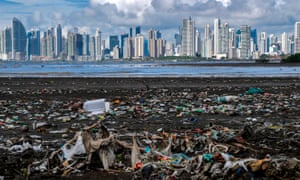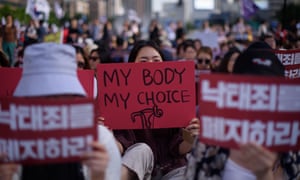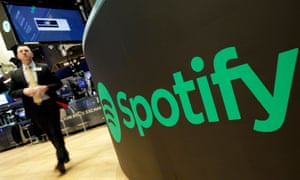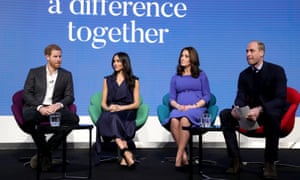From renewables to Netflix: the 15 super-trends that defined the 2010s
It was the decade of austerity, fracking, populism and internet lies. But not everything about the 2010s was terrible

The plastics backlash

It was once the height of metropolitan chic: the dash into Starbucks for a skinny decaf caramel latte en route for work, the takeaway cup a mark of upward mobility. Those were the days of Sex and the City, when the culture of doing everything on the go eating, drinking, socialising was taking hold.
But in the past 10 years, in the developed world at least, the accoutrements of a disposable society the coffee cup, the plastic bag, the bottle of water have become items of shame as we see them pulled from dead marine mammals, clogging rivers in developing countries or lying on beaches littered with detritus.
Since 2010, more than 120 countries have banned or legislated against the use of plastic bags. European countries, including the UK, have considered levies on takeaway coffee cups and multimillion-pound brands such as Coca-Cola and Nestl have faced high-profile campaigns designed to get them to clean up their waste. Fast fashion has come under fire too.
These movements are in their infancy and the scale of the problem is still growing. Some companies are taking their own steps, but legislation in Europe will force their minds to focus on reducing their waste footprint. And while images continue to spread across the globe exposing how our lifestyles damage wildlife and the environment, the backlash against a disposable society is likely to continue. Sandra Laville
Womens rights

The 2010s were a decade of hard-won progress in gender equality and reproductive rights globally. The launch of a campaign to increase access to modern forms of contraceptive in 2012 has resulted in 53 million more women and girls now using family planning in some of the worlds poorest countries. Two-thirds of countries have achieved gender parity in primary education. And, although the figure is still low, more women are now sitting in parliament than in 2010: 11,340, compared with 8,190.
The #MeToo and Times Up movements have propelled sexual violence and harassment into the spotlight and young women have become the face of high-profile global campaigns, including the Nobel laureate Malala Yousafzai fighting for girls education, and Greta Thunberg for action to tackle the climate crisis. One notable campaign was the struggle against female genital mutilation (FGM), which gathered pace through the decade.
But any progress is tempered by statistics that show one in three women globally will experience sexual or physical violence in their lifetime. Efforts by conservative religious groups to roll back womens rights, particularly sexual and reproductive rights, have intensified and are having some impact. The Trump administration has emboldened these groups by introducing an extreme policy that bans funding to overseas groups doing any work related to abortion.
However, women are mobilising in their tens of thousands to fight the backlash, setting the stage for a turbulent start to a new decade. Liz Ford
Streaming

Giving a DVD or CD as a gift in 2010 was commonplace. Not any more. In the past decade, not only has the music industry shifted from CD to MP3 (with a smattering of a cassette and vinyl resurgence thrown in) and TV platforms from live services to on-demand catch-up players, but paid-for streaming is now the unequivocal norm across most of the developed world.
Since Netflix switched its primary business model of DVD rental to streaming in 2010, its user base has soared. The recent release of the $159m Scorsese epic The Irishman amply demonstrates that Netflix has the financing to eclipse even the most established of Hollywood giants for its own content. Other producers are following suit, from Amazons Prime Video service, which accounts for over 26 million users, to the BBC and ITVs new BritBox platform. Streaming has become the default.
The situation is even more marked in the music industry. Since its launch in 2008, Spotify has grown to 248 million monthly active users and is valued at $23bn. Streaming now accounts for more than half of major record label income. As CD sales drop by almost 29% year on year, labels are increasingly relying on streaming as the main platform for their new and established artists, with services such as Apple Music, Tidal and Amazon Music all providing rival alternatives. Even MP3 downloads are dropping by almost 28% each year, a shift exemplified by Apple shutting down its flagship iTunes service to become a part of its streaming platform, Apple Music.
Potential unlimited access to thousands of hours of TV, film and music is clearly a tantalising prospect not to mention the environmental advantages of moving away from physical products. The access to this information has become more important than ownership. Few predict that the tide of streaming will turn back any time soon. Ammar Kalia
Veganism

Ten years ago, being vegan came with a certain social stigma. It was the kind of diet that led to eye-rolls at dinner parties, a limited range of restaurant options and the continuous fielding of the question: So, what do you eat?
But over the course of a decade veganism has gone mainstream in the developed world. According to a poll commissioned by the Vegan Society, there are now 600,000 vegans in the UK, up from 150,000 in 2014, as well as millions adopting vegetarian or flexitarian diets. Its no surprise that companies have been scrambling to make the most of this flourishing new market.
One in six food products launched in the UK in 2018 had a vegan claim and all the major supermarket chains have increased their vegan offerings. Who could forget the nationwide buzz generated by the Greggs vegan sausage roll earlier this year, which flew off the shelves and boosted company profits? Now McDonalds has announced the launch of its first fully vegan Happy Meal.
Concern over animal welfare, along with a desire to be more environmentally friendly and eat healthily, has largely fuelled the demand, with record numbers signing up to Veganuary every year, from 3,300 in 2014 to 250,000 in 2019. And the trend is not just consigned to food: sales of cruelty-free cleaning products have soared, while Superdrug reported a rise of over 300% in sales of vegan-labelled beauty products from 2015 to 2018.
There are now countless vegan events and dozens of cookbooks, and restaurants from Wagamamas to Pizza Hut offer vegan options; in just a few years, consumer pressure has forced society to accommodate lifestyles free from animal products better than ever before. The shift shows no sign of letting up either, with some reports suggesting that a quarter of the population will be vegetarian by 2025. Jessica Murray
Renewables

In early December, thousands of Britons were paid to charge their electric vehicles or run a laundry load to make use of the record-breaking renewable energy generated by the UKs wind farms. It is the latest example of how the renewable industry has turned the energy system on its head in the past 10 years.
At the turn of the decade, wind, solar and hydro power projects made up less than 8% of Britains electricity. Today, more than a third of the electricity mix comes from the fleet of renewable projects, which have grown fourfold in 10 years. Globally, investors have ploughed $2.5tn into renewables since 2010 to drive its share of the worlds power generation to 12%.
The burgeoning industrys greatest feat has been to cut the costs of renewable energy technology far faster than expected. A global survey by Bloomberg New Energy Finance found that solar power costs had fallen by over 80% since 2009, while onshore wind had plunged by 46%. In the UK, the cost of offshore windfarms has dropped by half in the past two years alone; they are now cheaper to build and run than fossil-fuel plants.
The ultra-low cost of renewables means wind and solar farms will spread even faster in the years to come. By 2030, the UK government expects offshore windfarms alone to provide almost a third of the UKs electricity, with total renewables making up about half of the electricity system. Renewable energys greatest decade will light the way for even greater decades ahead. Jillian Ambrose
Mental health

It was the decade when we finally turned to face our mental health problems, didnt much like what we saw and started to do something about it.
In 2010, depression was still the illness that dared not speak its name: wherever you lived, few people mentioned it in public apart from the occasional brave celebrity outlier. Certainly there were no MPs, chief executives or presidents on the record about their psychological disorders.
By the end of 2019, its still not easy to tell the world that there is something not quite right with your brain. But its perhaps easier than it has ever been. You may well still face discrimination particularly if you suffer from one of the rarer conditions that are still taboo, like schizophrenia or borderline personality disorder. But people will understand.
Many family doctors will have a better grasp now than they did 10 years ago (though they may not be able to do much for you). Your workplace will probably have mental health first-aiders, employee assistance programmes and, if they are really smart, psychiatric conditions added to employee insurance policies. Your friends will all know someone who has been through something similar.
What changed? The internet undoubtedly helped (though Googling your symptoms remains a very bad idea): a torrent of blogs, videos and advice columns helped to shed light on the darkness. Campaigns by British royal family members and mental health charities cut through. MPs including Charles Walker and Kevan Jones came out. Portrayals in TV shows, films and novels multiplied.
The next step is to crack the treatment conundrum. By the end of the 2020s, mental ill-health will be so common that it may even become the rule rather than the exception. But it will still feel like the most dreadful thing that can ever happen to a human, and the demand for services will have gone up, not down. Mark Rice-Oxley
Rethinking gender

At the start of the 2010s, transgender people did not exist in the mainstream. They were portrayed by cisgender actors in Hollywood, excluded from US and UK gay rights groups and denied basic legal recognition. But now, trans and non-binary people are stars on screen and breaking barriers in media, politics, sports, courtrooms, science and other industries.
In 2013, the US whistleblower Chelsea Manning came out as trans and became a global LGBTQ+ icon. In 2014, the actor Laverne Cox graced the cover of Time magazine, which declared a transgender tipping point. Caitlyn Jenner came out the following year.
While cis male actors repeatedly won awards for playing trans women in the first half of the decade and beyond, this kind of casting eventually became untenable; in 2018, Scarlett Johansson dropped a role as a trans man amid massive backlash, while Tangerine, A Fantastic Woman, Pose and other projects raised the bar by giving trans actors leading roles.
Celebrities such as Indya Moore, Asia Kate Dillon and Sam Smith also came out as non-binary, pushing mainstream awareness of gender-nonconforming people, who have long existed in cultures around the world.
With expanded societal and scientific recognition that gender is fluid, states across the US passed laws allowing people who are neither female nor male to mark a third gender on IDs. Germany, Nepal, Austria and other countries also expanded gender options. Teens increasingly rejected gender labels and intersex rights activism blossomed.
There has been a dark side to the progress: unprecedented assaults on LGBTQ+ rights and increasing reports of violence, harassment and discrimination, particularly against trans women of colour. The decade of visibility and backlash has set the stage for continued civil rights battles with growing movements of trans and non-binary people organising to fight back. Sam Levin in Los Angeles
Womens football

A decade of steady quantitive growth for womens football in England has been studded with qualitative leaps in the sports development.
In 2011, the FA launched the Womens Super League and moved the game out of the shadow of the mens into the summer. It was a bold step and reaped instant rewards. The average attendance of 550 in that first season was an increase of 604% on the previous season average. At the decades close, that average had reached 4,112.
The English national team, the Lionesses, have provided the biggest public window into the game, with consistent showings through the decade. That has generated a surge in the number of women and girls playing football: there are now more than 11,000 registered teams and more than 2.6 million women over 16 playing at one level or another.
This is all a result of multimillion-pound investment from the FA and commercial partners. In 2018, the FA announced an additional investment of 50m in the womens game over six years. A league sponsorship deal with Barclays is believed to include investment of as much as 20m.
There is a real momentum behind womens football. Professionalism means the product on the pitch has improved dramatically and a home Euros to help start the decade off in 2021 is likely to be another moment that propels the sport forward. Suzanne Wrack
